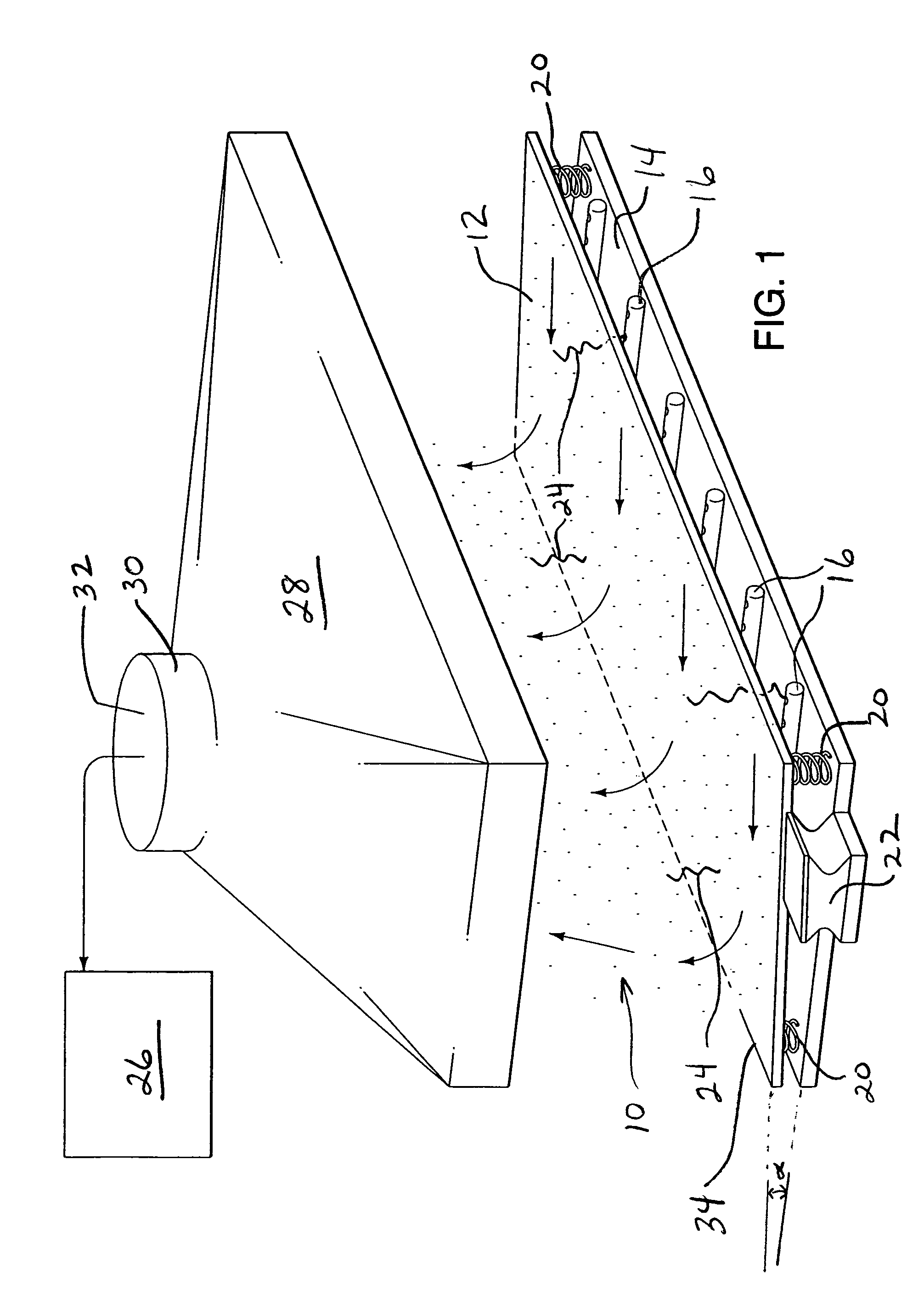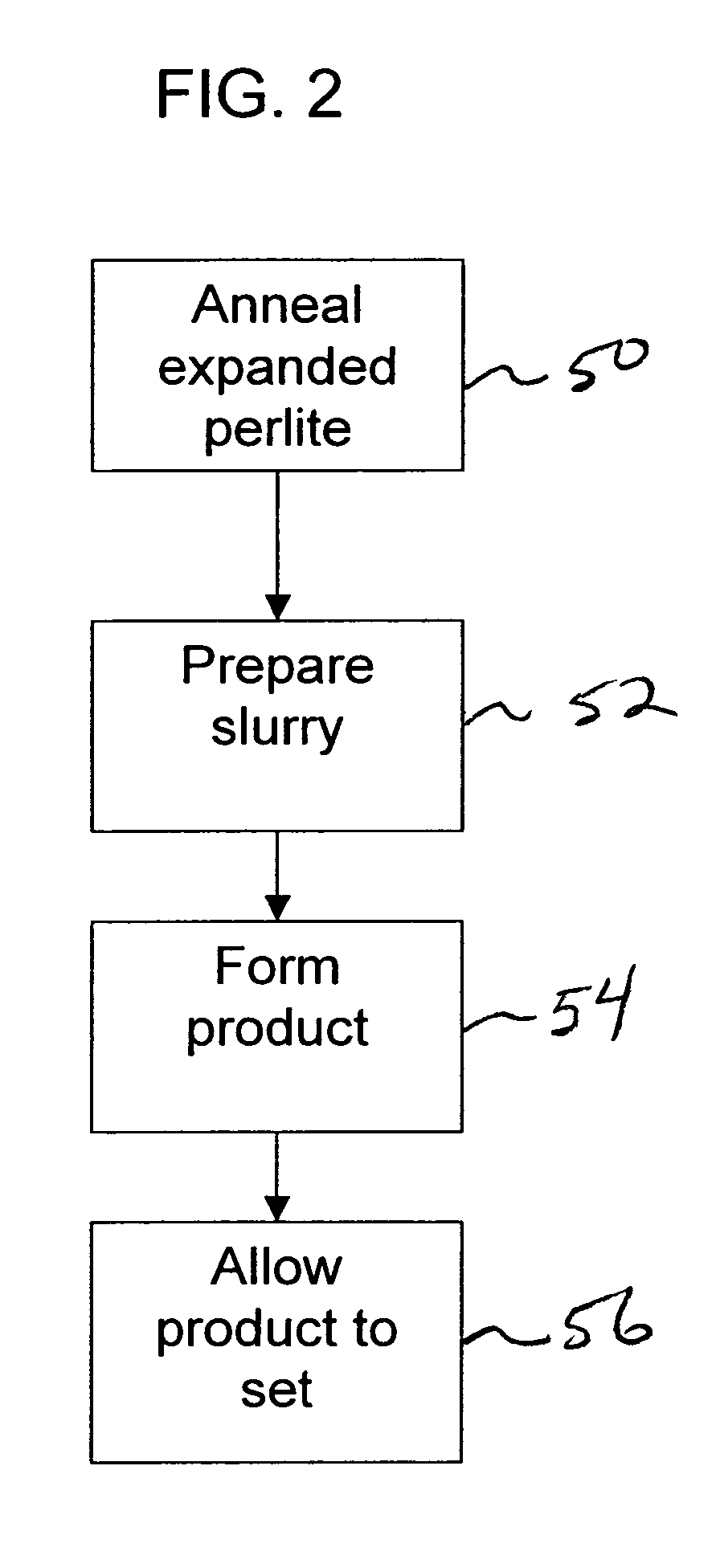Expanded perlite annealing process
a technology of expanded perlite and annealing process, which is applied in the field of expanding perlite annealing, can solve the problems of large amount of water needed to wet the surface, low water retention rate, and high cost of heating the base mat and all the water held in the pores, so as to reduce water retention and water demand, the effect of reducing the water demand of expanded perli
- Summary
- Abstract
- Description
- Claims
- Application Information
AI Technical Summary
Benefits of technology
Problems solved by technology
Method used
Image
Examples
Embodiment Construction
[0021]This method reducing the water demand of expanded perlite so that neither a dispersant nor extra water need be added to a product slurry. The starting material, expanded perlite, is either made or purchased commercially. A commercial source of perlite is Silbrico Corp., Hodgkins, Ill.
[0022]Perlite generally comprises any glass rock with the capacity to expand on heating, similar to obsidian, and particularly comprises volcanic glass of rhyolitic composition. Perlite generally contains 65-75% silica, 10-20% alumina, 2-5% water and smaller amounts of soda, potash, and lime. When heated to its softening point, the water in perlite, which has turned to steam, expands rapidly, causing the rock to expand like popcorn. The volume of the perlite is increased approximately tenfold forming light, fluffy particles having an average density ranging from about 3 lb / ft3 to about 8 lb / ft3.
[0023]In the conventional method of preparing expanded perlite, the perlite ore first ground to a fine s...
PUM
| Property | Measurement | Unit |
|---|---|---|
| density | aaaaa | aaaaa |
| angle | aaaaa | aaaaa |
| density | aaaaa | aaaaa |
Abstract
Description
Claims
Application Information
 Login to View More
Login to View More - R&D
- Intellectual Property
- Life Sciences
- Materials
- Tech Scout
- Unparalleled Data Quality
- Higher Quality Content
- 60% Fewer Hallucinations
Browse by: Latest US Patents, China's latest patents, Technical Efficacy Thesaurus, Application Domain, Technology Topic, Popular Technical Reports.
© 2025 PatSnap. All rights reserved.Legal|Privacy policy|Modern Slavery Act Transparency Statement|Sitemap|About US| Contact US: help@patsnap.com


